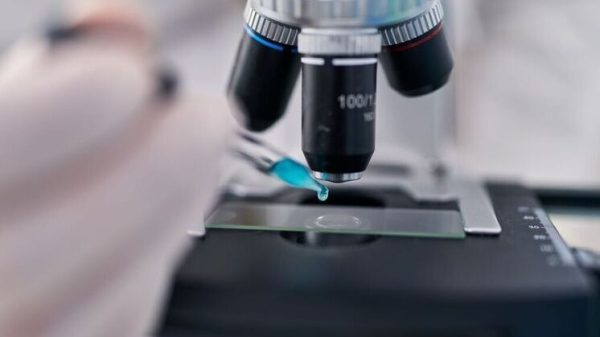How many coronavirus tests does the UK really need? The official aim is 500,000 a day by the end of October, more than double the current total. But, amid concern over a series of missed targets, scientists have tried to quantify the projected need – and their findings help illustrate why demand is so high now, and why it will be even higher come December.
On Wednesday, Dido Harding, the head of the NHS test-and-trace programme, revealed that demand in England was currently three to four times capacity, which stands at 242,817 tests a day.
A new study reveals that, even without Covid-19, the number of people expected to be experiencing coughs and/or fever on any given day in September is 250,708, due to seasonal illnesses such as colds and flu. The NHS advises anyone experiencing a persistent cough, fever or altered sense of taste or smell to seek a coronavirus test.
Chart
On top of that, there is weekly testing of social care workers and monthly testing of care home residents; Matt Hancock, the health secretary, said this week that more than 100,000 tests a day were now being prioritised for social care alone.
The study – part of a report submitted to the Scientific Advisory Group for Emergencies (Sage) this month by Health Data Research UK – analysed symptoms reported by 873 people who kept daily health diaries between July 2018 and June 2019. It extrapolated these figures to calculate the daily expected incidence of non-Covid-related coughs and fevers for each month in the coming year.
According to this analysis, the daily tally of people experiencing non-Covid coughs and/or fever in October would be 320,110, rising to 444,660 by December.
The research, which has not yet been peer reviewed, suggests that the demand resulting from normal seasonal illness would outstrip the current capacity. Assuming everyone with a cough and/or fever requested a test, there would not be an excess of tests until next June if current capacity was to remain the same, the researchers calculated.
“This incidence that we have due to baseline cough and fever is basically a minimum capacity needed to be able to test adequately within the UK’s population, if we’re going to identify Covid-19 cases,” said Max Eyre, an epidemiologist at Lancaster University, who led the study.
In the event of a significant second wave, with an envisaged 9,402 daily symptomatic cases of Covid-19 during October rising to 44,047 in December, capacity would need to hit at least 329,512 tests a day by next month, and 488,707 by December just to meet the demand from people experiencing coughs or fever.
Eyre said: “In my opinion, we need significantly more capacity than this to be made available urgently to account for the uncertainty associated with these estimates, and to ensure we can cope with additional demand due to potentially higher Covid-19 transmission levels, the planned routine testing of frontline health and care workers, and people requesting tests who do not have a cough, fever or anosmia.”
UK entering second wave of coronavirus, Boris Johnson warns
Read more
“If we are going to have an effective response where we are identifying all cases of Covid-19, we want everyone displaying symptoms to get tested rapidly, and to be able to feed that data into our test-and-trace programme, so we can interrupt those chains of transmission.”
The number of tests needed also hinges on demand. At the moment, this is high: many people are anxious, or keen to get on with everyday life without risking infecting others. “It will be exacerbated as we enter the autumn/winter when other viral respiratory diseases normally emerge,” said Gordon Dougan, a professor of medicine at the University of Cambridge.
Prioritising certain groups, such as only those with symptoms, those who have been in contact with confirmed positive cases and high-risk frontline workers, might reduce some of the pressure. “I would say that the UK is close to reaching how many tests it needs, if it can come up with a clear method for prioritisation,” said Dougan, adding that any prioritisation needed to be clearly articulated and justified.
But he said that it was not just a numbers game. “In a sense, how many tests a country needs is not the right question. How it uses them, and where it does them is also important. The current multilayered organisation makes it very difficult to get tests back in 24 hours, which is the real issue if you want to drive down R [value] and transmission rates.”






















































Свежие комментарии